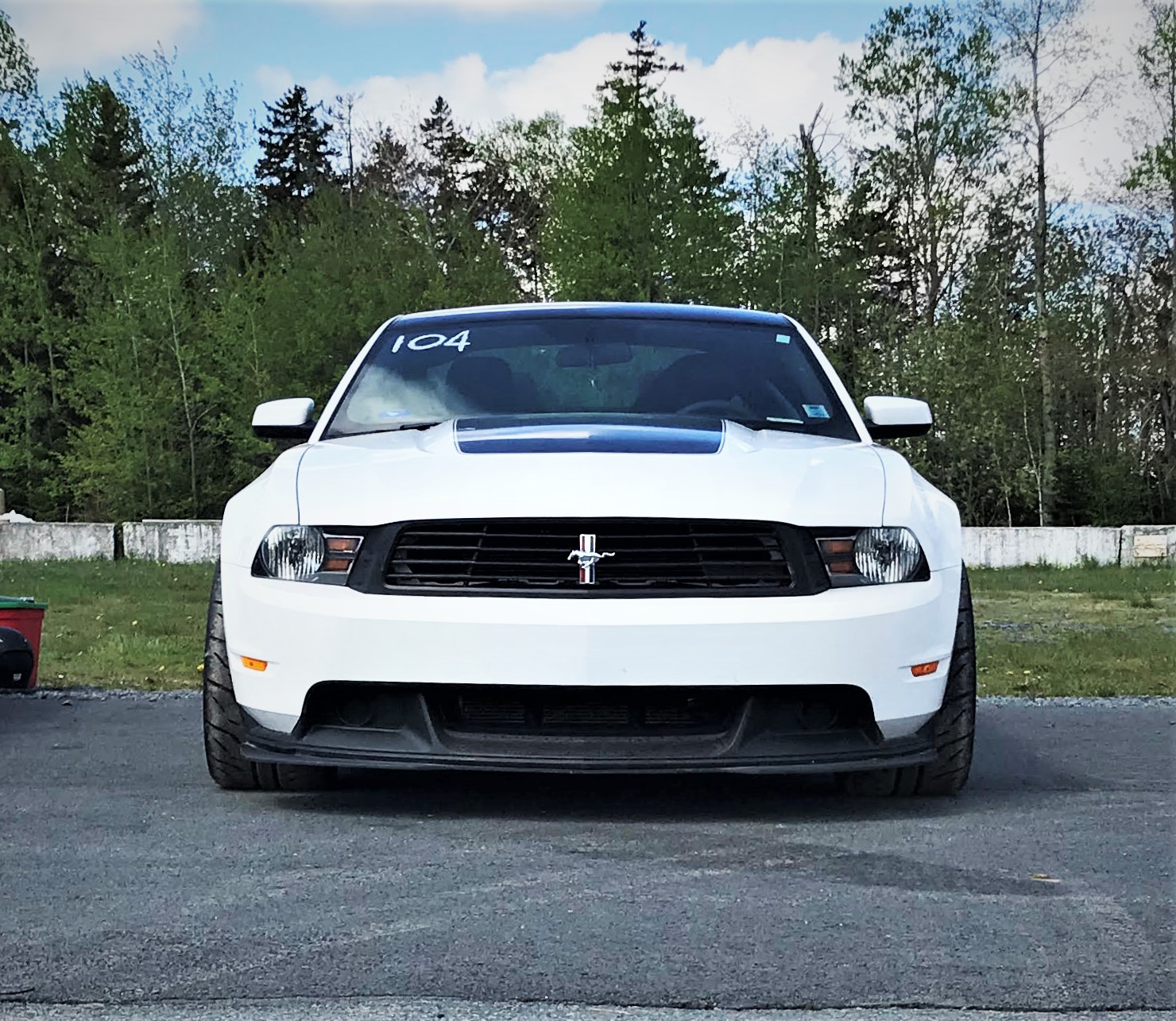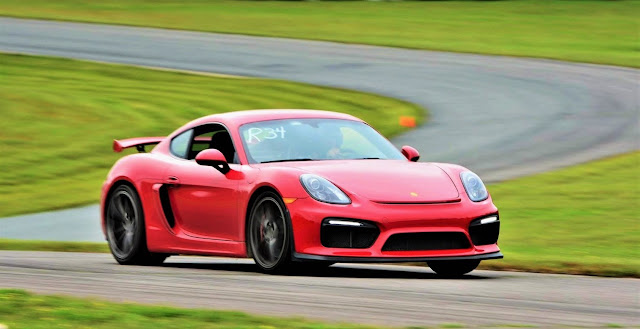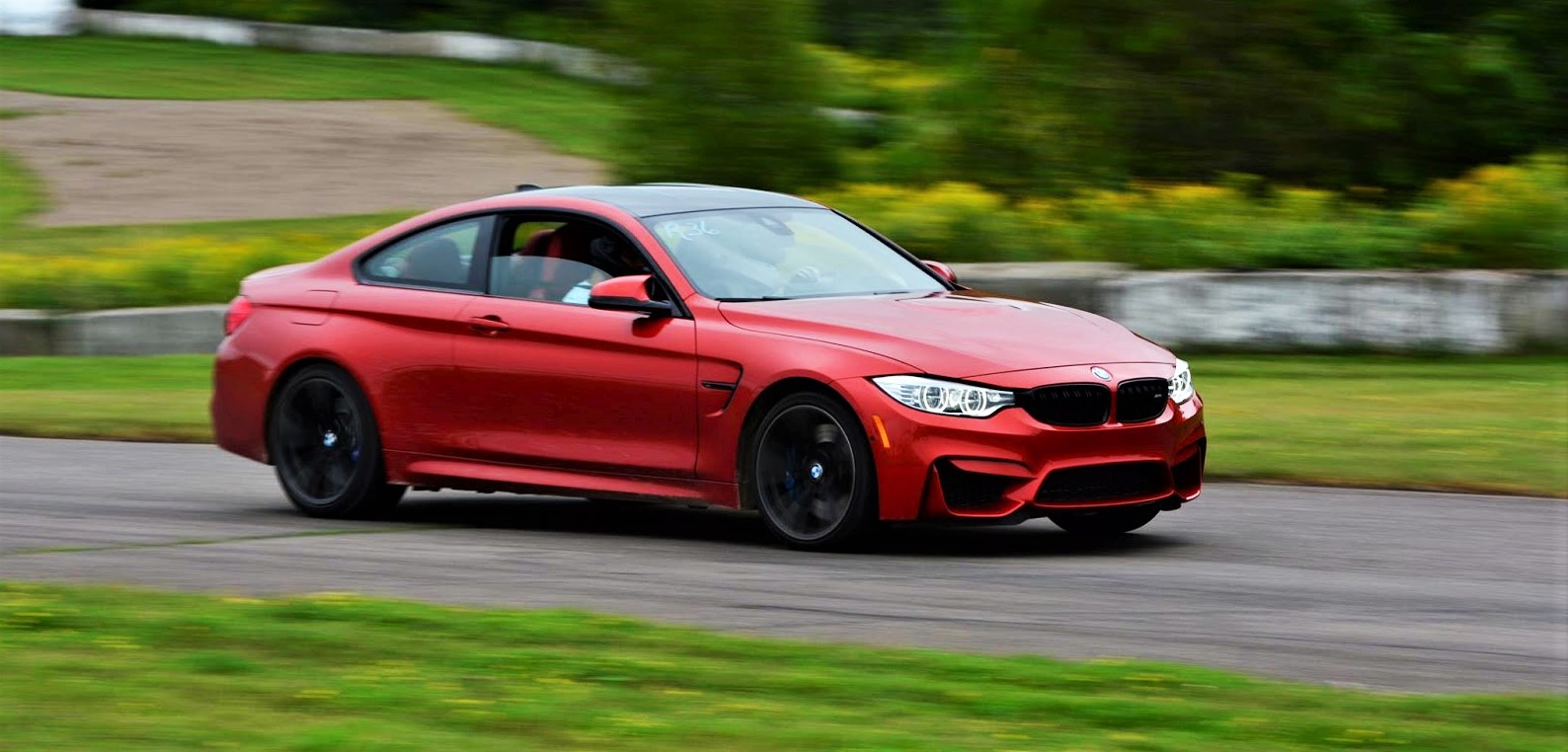Inevitably, comparisons between the new +Chevrolet Corvette Z06 and the +Nissan GT-R Nismo are being made. Before I get to any discussion, here are the performance numbers for each:
| Corvette Z06 (manual) | Corvette Z06 (auto) | Nissan GT-R Nismo | |
|---|---|---|---|
| 0-30 mph | 1.5 sec | 1.3 sec | 1.2 sec |
| 0-40 mph | 2.1 sec | 1.7 sec | 1.7 sec |
| 0-50 mph | 2.6 sec | 2.3 sec | 2.2 sec |
| 0-60 mph | 3.2 sec | 3.0 sec | 2.9 sec |
| 0-70 mph | 4.1 sec | 3.8 sec | 3.7 sec |
| 0-80 mph | 4.9 sec | 4.7 sec | 4.7 sec |
| 0-90 mph | 5.9 sec | 5.6 sec | 5.8 sec |
| 0-100 mph | 7.2 sec | 6.8 sec | 7.0 sec |
| 1/4 mile | 11.3 sec @ 126.2 mph | 11.1 sec @ 127 mph | 11.2 sec @ 125 mph |
| braking 60-0 mph | 91 ft | 91 ft | 97 ft |
| braking 70-0 mph | 128 ft | 128 ft | 145 ft |
| figure 8 | 22.5 sec @ 0.98 g (avg) | 22.5 sec @ 0.98 g (avg) | 22.9 sec @ 0.91 g (avg) |
The manual Z06 acceleration numbers are based on Motor Trend's test because they tested a manual and the auto's numbers are based on Car and Driver's test because they tested an auto. The GT-R Nismo acceleration numbers are based on Car and Driver's numbers because they published full acceleration tests although it is worth noting that Motor Trend got a tenth (0.1) sec better 14 mile time of 11.1 sec. 60-0 mph braking and figure 8 numbers came from Motor Trend tests and 70-0 mph braking are from Car and Driver's test.
The GT-R obviously has a small launch advantage but the 8-speed automatic Vette catches up by 80 mph. The manual loses too much time shifting, though, and never catches up based on test numbers although I expect the power advantage of the Vette to come into play beyond the test numbers (once speed is further into the triple digit range). The Corvette has a clear handling advantage, though. A lot of people would probably credit the handling advantage to the Michelin Cup 2 tires but Nismo could have easily spec'ed similar tires for the GT-R plus they aren't nearly as extreme as the Cup tires use on the last generation ZR1. The GT-R is even more of a limited edition than the Vette so it would be more justified. I'm not sure why Nissan didn't use grippier tires to be honest. If I had to guess, I would say that it's to protect drivetrain components.
I know that many owners who track their GT-R's use slicks or DOT track tires but if something breaks out there, Nissan doesn't have to foot the bill for the repair but if you're on the road with grippy tires and something breaks before the warranty is out, it's on Nissan. I don't see any other possible reason. At about $150,000 a piece, cost wasn't an issue during development and judging by how hardcore and limited this version is, being street friendly was not a priority - only performance. I think a remote possibility could be bragging rights - to say that the car is capable of certain lap times on very street friendly tires. With that said, I would like to see the GT-R on similar tires go up against the Vette. I do expect the Corvette to be faster around a track by a good margin, probably 2-3 seconds faster around VIR than the GT-R.
During its brief stay with Motor Trend, Randy Pobst laid down a lap time of 1:30.2 around Road Atlanta in the Vette. A track prepped Nissan GT-R laid down a lap time of 1:29.9 on Michelin Pilot Super Sports. The car is the Forged Performance FP800 GT-R which should have nearly 800 hp at the crank with turbo upgrades and supporting modifications as well as suspension work that was set up for NASA trials. For reference (regarding tires), the C6 Corvette ZR1 had a best lap time of 2:51.8 on the standard Michelin Pilot Sport PS2 tires (basically the last generation Pilot Super Sports) and 2:50.7 on the Michelin Pilot Sport Cup tires, both at VIR during Car and Driver's Lightning Lap features. These Cup tires are actually less aggressive than the Sport Cup 2 tires used on this Z06 and the Pilot Super Sports used on the GT-R are better than the Pilot Sport PS2 tires used on the ZR1. All this means that the better tires (Sport Cup 2) on the Vette are worth less than a second compared to the more streetable Pilot Super Sports used on the FP800 GT-R yet it only managed to be 0.3 seconds quicker with less practice in the Vette by its driver. The GT-R Nismo should have a power disadvantage of nearly 200 hp so it should be considerably slower than that. Don't expect it to be that easy to get those lap times in the GT-R. either
One thing that a lot of people accuse the GT-R of is being too easy to drive and anyone can go and put down a hero lap time. This can be a compliment since it is easy to be fast or a criticism since it takes less skill and does the work for you. I think it is untrue all together. I haven't driven a GT-R but here's what I think. Based on reviews and personal experience with advanced AWD cars and track driving, that won't be the case. AWD can't fix lack of skill. If you brake early or late, the car can't help you. If you apex early or late, the car can't help you. Sir Jackie Stewart once said in an interview with FHM that when he started driving, he thought there were three parts to a corner - corner entry, apex (mid corner) and corner exit. Now, he realizes that there are eight. That's right, eight parts. Here they are:
1 - Getting off the gas/accelerator
2 - Getting on the brakes
3 - Getting off the brakes
4 - Turn in
5 - Wait for apex
6 - Roll in the gas/accelerator
7 - Unwind steering
8 - Corner exit
AWD can help you with turn in if the car differentials are tuned to purposely channel torque to the outside wheel to help the car rotate but that doesn't make the car easier to drive IMO, just different. The only point that AWD would help you with is number 6, where AWD gives you a lot more room for error. You don't have to be as careful with throttle roll in, you can put a lot more power down and you don't have to worry about the car doing something unpredictable. Getting this part right has a huge effect on lap times, though. To quote Sir Jackie once again, the avid Top Gear (UK) fans might remember the episode where James May took some coaching from him and I remember him saying that the exit of the corner is far more important than the entry of the car with regards to speed. That's where the GT-R shines. The added stability also applies to car behaviour under power in general and gives you more confidence to push the car harder. Other than that, you're on your own.
With that said, I still would take the Vette. There are three main reasons for that: a good V8 in the front, manual transmission in the middle and RWD in the back. The definition of a proper sports car in my opinion. Beyond that, I'm also using my experience with my car (a 2012 Mustang Boss 302) versus my experience driving a 2011 Mitsubishi EVO GSR. The EVO felt too clinical. I wish I could use a term less abused by auto journalists but I can't think of a bette word. Going on power had no drama, no emotion. It felt like a simulator, your only indication of increasing speed is the building of g-forces and the outside world moving. The Boss was a completely different beast and I suspect that the difference between the GT-R Nismo and the Corvette Z06 is similar to that between the EVO and the Boss. Being a long time Corvette fan doesn't help either. I do hope I get to drive both or at least one of each at one point or another, though.
Which would you take, a C7 Corvette Z06 or a Nissan GT-R Nismo?


.jpeg)











Comments
Post a Comment